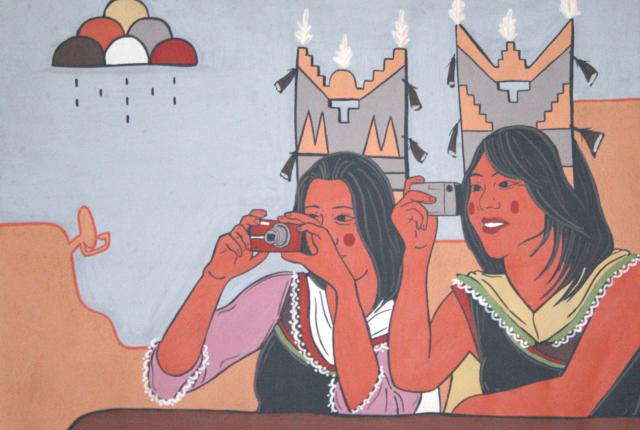Above: Corn Maiden No. 13, by Jason Garcia, of Santa Clara Pueblo. Photograph courtesy of Jason Garcia.
You will never forget the first time you attend a Pueblo dance or feast day (for a full list of them, go here). Some honor patron saints’ feast days, others new tribal officials. Still others double as blessings of the fields. While many are open to the public, a handful are closed to everyone but the members of that pueblo. Those that are open to the public almost always take place during daylight hours in the community plaza, clearly marked with miles of parked cars.
Throughout the day, certain houses will host meals with visitors, family, and friends. You must be invited to enter someone’s home to share the food. The larger feast days also have food vendors.
Read more: 5 Can't-miss Native restaurants.
There is a lot going on during the dances, so it’s best to understand a few things before you even get in the car. Start by reading up on the history of that community. Each pueblo has a website with specific information. Then follow this guide:
1. No phones or cameras. Ever. Do not photograph, record, sketch, or depict the dances in any way. There are signs everywhere that remind you of this, but if a tribal official finds you using a camera or phone, it can be taken and you may not get it back. That means no selfies either.
2. Dress appropriately. Feast days and public dances are visually dynamic forms of prayer: You’re there to pay honor, not be a distraction. It’s like dressing for any blessed celebration of life and abundance: Wear something informal, but nice, without too much visual pop.
3. Be courteous. Don’t be the person who wears the giant floppy sun hat and stands in front of other visitors with a designer umbrella. Here’s where you make yourself scarce, giving the dancers, drummers, and their helpers space.
4. Keep your voice down (that means no whisper yelling) and be thoughtful about what you say. We are fortunate to be welcomed into Pueblo communities to feast and celebrate. We are not, however, owed any explanations of any part of their culture. If you have a host, ask that person to help you understand boundaries and perspectives.
5. Weapons, drugs, and alcohol are prohibited. Go to the dances with gratitude in your heart and you will have a great time. Check indianpueblo.org for a calendar of feast days throughout the state.


